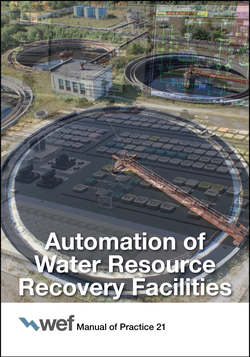Читать книгу Automation of Water Resource Recovery Facilities - Water Environment Federation - Страница 207
4.1 On–Off Control Versus Modulating Control
ОглавлениеIn the thermostat example in the preceding section, the control is considered on–off control because there are only two states the heater can be in: on or off. This is often called discrete control because there are only two discrete states that can be controlled. When the temperature in a house drops below the setpoint, the thermostat responds by turning the furnace on. When the temperature has risen sufficiently, it turns the furnace off. The thermostat is designed with a temperature deadband to prevent on–off cycles from occurring too rapidly; however, its main drawback is that the temperature constantly oscillates around the setpoint.
The other control type is modulating control. An example of modulating control is a modulating air valve that varies its opening to maintain the dissolved oxygen level in the aerobic section of an activated sludge basin. The valve’s position is controlled. If dissolved oxygen is low, the valve opens a little more and, if dissolved oxygen is high, the valve closes a little more. This is also called analog control because the position continuously varies from completely closed to completely open. There are many examples of both types of controls in this section.
